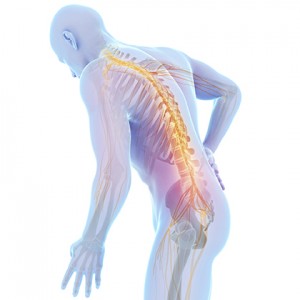
As Mother Nature keeps bringing on the winter wind, now is the time to think about spring and summer! Waiting to take care of these injuries when the first fair day arrives can be too late. No one wants to lose weeks to months of fun in the sun because of a lengthy rehabilitation. By taking care of these injuries now, you can have plenty of time to enjoy your favorite activities in the best kind of weather.
BACK INJURIES
From picking up leaves in the fall to shoveling snow, low back injuries are common this time of year. While a simple backache may dissipate in a day or two after shoveling out after a winter storm, if it lingers longer than a week, chances are it’s not going away on its own. Waiting until the first round of golf to find out that you can’t complete the backswing due to low back pain not only severely hinders the golf game, but can also severely hinder the recovery. The more chronic the pain is, the longer it takes to eliminate the pain once treatment is started. Pain management becomes more complex; muscle strength atrophies; and bad spinal mechanics become a difficult habit to break. Fortunately, from a simple muscle strain to a herniated disc, all low back injuries have the opportunity to be conservatively managed quickly if treatment is sought out quickly.
JOINT REPLACEMENTS
Fear of slipping and falling is often the biggest rationale people wait to have their much-needed joint replacement surgeries. While a legitimate concern, the process of recovery and length of time for recovery is often overlooked by patients. For a typical total hip replacement, it can take 12 weeks or more to feel “normal” again. For a total knee replacement, that timeline can extend to six months. By waiting until spring to have the surgery, patients forego their fun-in-the-sun for recovery and rehabilitation. However, if that same surgery were elected to be performed in the late fall or winter, then plenty of warm weather is still left in the year to enjoy the capabilities of the new joint. To address the fear of falling, simple precautions can easily be taken to minimize the risk of slip and fall in the snow following the surgery. As an added benefit, patients in the winter often experience less swelling than those in the summer, as a result of the reduced humidity.
ROTATOR CUFF REPAIRS
Similar to joint replacement surgery, shoulder surgeries are often avoided in the winter due to the fear of falling. However, again, similar to joint replacement surgeries, the length of time for recovery from this surgery is grossly underestimated. Returning to swing a golf club, throwing a ball, or even swimming laps in a pool will take a
minimum of 12 weeks of physical therapy. While a neighborhood teenager may need to be hired to shovel the snow, the winter hibernation season is an idea for resting and mending from a rotator cuff repair surgery. After completing a comprehensive rehabilitation program with your physical therapist, you will be ready to tee off with your regular golf league and enjoy your planned summer vacation without restrictions.
SPORTS EVALUATIONS AND CONDITIONING
Winter is not only the time to remedy nagging injuries, but it’s the perfect time to prepare for the athletic season ahead. Whether you are a runner, a golfer, or an over-40 league softball player, preparing for the upcoming outdoor activities can help prevent future nagging injuries. The “off-season” is the best time to undergo performance and biomechanical evaluations with a physical therapist trained in motion analysis. From this evaluation, deficiencies can be addressed and a plan for improvement implemented. Furthermore, winter is a perfect time to re-strengthen after the holidays and to condition yourself into the shape you need to be in in order to enjoy those outdoor activities and minimize the concern for strains and sprains. In just a few simple visits to physical therapy, conditioning tips and technique changes can help make the warm weather even more rewarding and enjoyable.
The winter is long and it would be unfortunate to miss enjoying any of the warm, sunny weather heading our way in a few months. Addressing lingering winter injuries now will help ensure a fun spring and summer without restrictions. Always discuss your medical options with your doctor first. Then, call your physical therapist to help accelerate your recovery and be a picture of health.


















